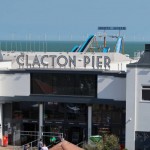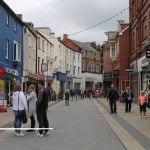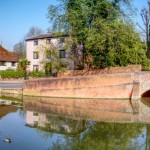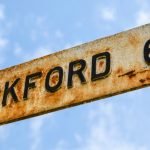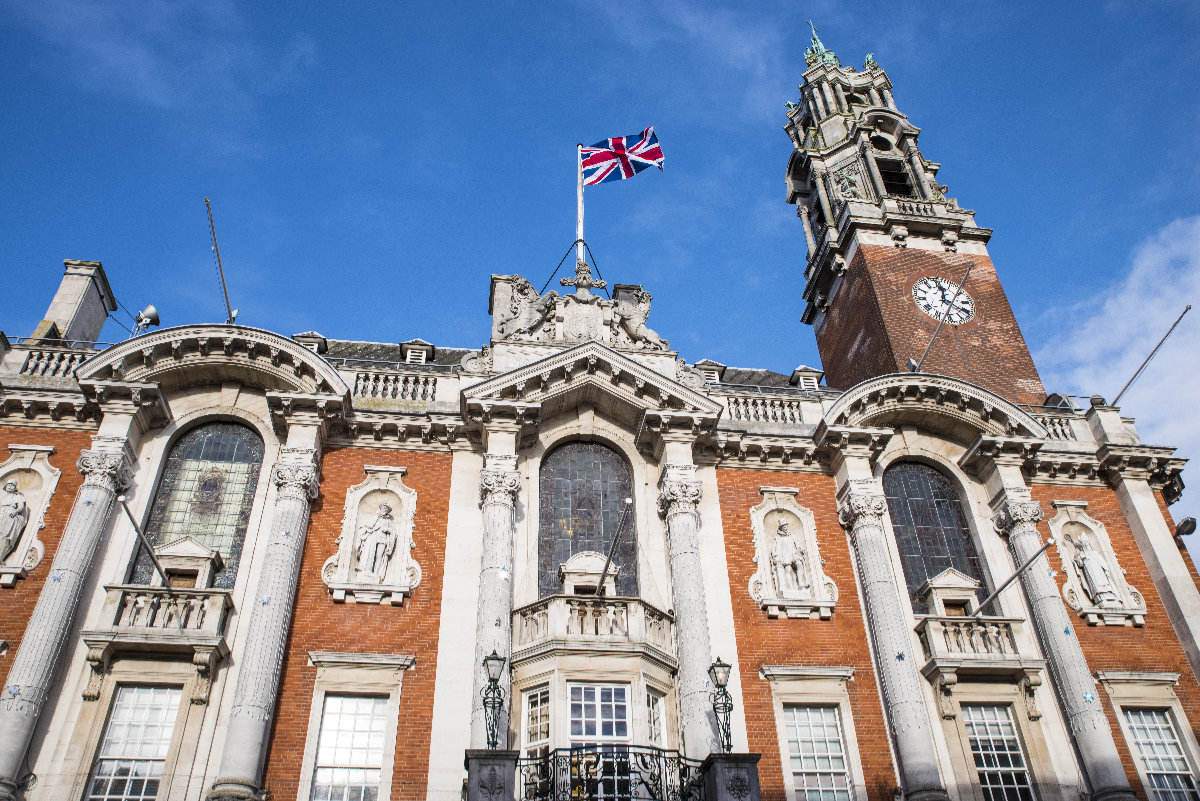
Colchester the Five Minutes Spare Way
All the way down in Essex county, Colchester perches on the banks of the River Colne. This southerly town claims to be the oldest in England, Britain, and among the most ancient towns in Europe. They joined the Most Ancient European Towns Network in 1994[i], back when it was founded. This group is dedicated to conservation, preservation, and managing things like tourism in some of the oldest places in our world.
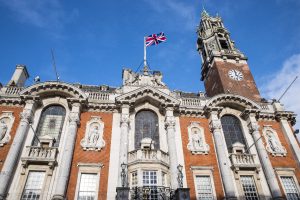
Colchester Town Hall
Image: chrisdorney/Shutterstock.com
Colchester is up there with Cadiz in Spain, Argos in Greece (the one from Greek legend) and Cork in Ireland. Evidence of civilization in Colchester goes back all the way to the glacial movements that carved the valleys and hills as we know them. They have found both Palaeolithic and Mesolithic items under the town. Evidence of Neolithic, Bronze Age, and Iron Age settlements have been found in and around town.
Here at Five Minutes Spare we compose a whole lot of locational pages. We thought Scotland and Ireland were old… but Colchester is something else. People have lived here since people existed. There is a Henge, plenty of Bronze Age burial sites, and monuments that dot the landscape that were built by the first people in the British Isles. It’s almost imperceptible.
Let’s put Colchester under the microscope and find out a little more about this historical marvel. From the outset, it seems like it would be a pretty neat place for a holiday.
The Early Days of Colchester
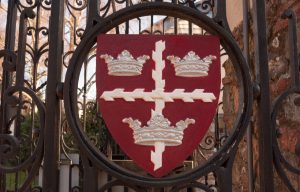
Image: callumrc/Shutterstock.com
As with every other town in England, scholars argue over the meaning of the name. Those who associate it with King Coel – or old King Coel from the nursery rhyme – will be disappointed to know that the town isn’t, in fact, named for the old king. Its pre-dates history and he arrived after the Romans did. Merry old King Coel was dead by the year 420 AD, Colchester was the Roman capital of England and they invaded around 40 AD… so that rules out one theory, at least. It would have been cool though.
A much more likely theory is that the River Colne was the source of the name. In addition, the Roman tongue sees Colonia as a new colony they set up, so it may be derived from this word.
At any rate, Pliny the Elder, who was a Roman author, mentioned Colchester (Camulodunon) in 79 AD – before the Romans even got here. It is thought that the king of that time used the town as his capital. Interestingly, coins minted around that time use the Celtic variation of Colchester (Camulodunon) as their place of origin… To add to the confusion, the early Anglo-Saxons would have called the town Colneceaster, which was the lingual precedent to ‘Chester’.
Really, we should be calling it the town of many names. Rumour has it that Colchester was actually Camelot. Who knows? There’s nobody left to deny it… There is speculation that the town began as the origin place of the Trinovantes tribe. They would have lived across Essex and Suffolk.
The Romans arrived a few years after AD happened and invaded everywhere. Colchester is one of the first places they took. They built two Roman theatres, some Temples, and numerous dwellings. In 61 AD it was sacked by Queen Boadicea. When she was beaten back, they built the walls of the town. They are known to be the longest, thickest Roman walls in the British Isles. Evidence has since been found of a chariot racing track. Other finds in the area have been rather prolific. It is thought the population of the town was around 30k. However, when Boadicea wrecked it they shifted their centre of power to London.
Viking Colchester
After the Romans retreated back where they came from, the town became a presumably sleepy settlement. Many of the former Roman towns were just abandoned fully built. We imagine Colchester was similar. People from the outlying areas could have just chosen a wooden house and moved in. When the Vikings came around 800 AD they moved on in there. They may or may not have caused merry hell as they did so.
The Vikings used the town as a fort, attacking out from here to ensnare nearby lands. In 917 King Edward laid siege to get them out. The English got the town back again, then the Normans invaded… Colchester had it tough. The Normans built a castle on one of the Temples and about 30,000 Romans turned in their graves. It was finished by 1100 and still stands today.
In 1086, Colchester was one of the biggest cities in the country. It had 193 households and 17 different owners. It was still close to capital size. You can browse through the full entry here. Colchester landowners, like many other landowners in England at the time, kept slaves.
Let’s pause for a moment and brighten things up before we get macabre. That England once engaged in the slave trade is important to remember… but we don’t want to scare our readers away so we will move quickly onwards.
Fun Facts About Colchester!
Let’s stop a moment to appreciate some remarkable, interesting, and generally fun facts about this town. Colchester is so old it could write its own book, but here are our favourites:
- Colchester is probably Camelot. It is impossible to tell because King Arthur reigned during pre-history. However, we can safely say that He existed, and he was a King. We can also say that there has been a huge amount of variations of Colchester in terms of town names over the years. When the facts match up, they match up…
- The Abbey of St Rouen (1086) kept 200 pigs in the woods, 300 sheep in the fields, and owned 6 plough teams… they were very, very rich!
- ‘Twinkle, Twinkle, Little Star’ was written in an attic in 1806, by a 23-year-old named Jane Taylor[ii]. To this day you can visit her attic. She wasn’t confined to it or anything, it just happened to be where she lived.
- The inspiring English wartime tune ‘There will always be an England’ was written in the Colchester Roman Way Camp… by one of the writers of ‘We’ll Meet Again’.
- Local legend has it that the oldest Hot Cross Bun known to man was baked here. It dates back to 1807…
So yes… Colchester doesn’t just have the oldest Roman walls in the country, it also has some of the oldest baked goods. We can’t help but wonder what fossilized Hot Cross Bun looks, smells or tastes like. Do you think it’s still edible?
Middle-Aged Colchester
Sometime after the Domesday survey, the Normans erected a castle in town. It is estimated that it was built by 1100 so they were probably building it while the survey was taking place. Both St John’s Abbey and St Botolph’s Priory were built at about the same time. In the same century, a leper colony arose on the outskirts of town. Early in the 12th century, they opened a leper hospital, which would all later be closed down by Henry VIII when he decided to legalise divorce… can you imagine what life would be like now without divorce? Maybe he was right.
Colchester got a charter for paving and cleaning the streets in 1189. It swiftly accommodated not just one market – but two. By the start of the following century, it is guessed the population was around 4k residents.
In 1216 the Barony in the castle revolted against King John and he had to lay siege to the newly built castle. Later in the 13th century, a group of Franciscan Friars would arrive and use Colchester as their base for preaching. Religion was always a big part of Colchester life, but the medieval town produced wool, leather, dye, and numerous fabric items.
Cobblers and hatmakers succeeded here, as did glass bottle making. Goods arrived through the port at Hythe – which has one of the longest piers in the country. Colchester was known for the oysters that were pulled out of the Colne… such farming is now illegal without permission… if you can find a clean enough spot for them to grow…
A fair was held here for weeks at a time every year. In 1413 a new charter was drawn up allowing the town to devise a coat of arms. In the same century, a slightly amusing law was passed that saw every able-bodied man in Colchester learn how to shoot a bow.
In 1565 a group of refugeed Dutchmen arrived in Colchester. They started teaching the locals how to make a specific type of cloth and Bourne Mill was subsequently opened. Forever after the town has had a Dutch Quarter… and that’s why.
The plague hit exceptionally heavily in the Colchester area. Over both the 16th and the 17th century they saw repeated outbreaks of plague. From the bubonic plague to cholera, Colchester has dealt with it all. When the civil war broke out in the 17th century the townsfolk were supporters of parliament. Nevertheless, a group of royalist soldiers took the town over and it was besieged by the Parliamentarians. Not only did the army turn canons on the people of Colchester, but they were also then fined £12,000 for their rebellion…
By the 18th century the cloth trade had all but ceased in Colchester. Silk weaving was more popular but even that declined before the end of the Industrial Revolution. Let’s pause a moment before examining the rapid expansion of the town. We want to know what famous people have been born in Colchester for the purposes of our own entertainment…
Famous People Born in Colchester
There have been more than a meagre handful of celebrity faces born in Colchester. No wonder. A town with such a long history is bound to have produced a literary genius, scientist, or footballer or two over the years. Here are some Five Minutes Spare favourites:
- Ben Foakes, the English cricketer, was born here.
- Internationally acclaimed journalist Giles Smith, who worked for the Times.
- Dermot O’Leary – the one from the telly – Colchester born.
- Hermann Arthur Jahn, the scientific theorist behind the Jahn-Teller effect, was born here to German ancestry.
There are so many others… DJ Darren Styles, footballer Carl Pentney, Physicist Oliver Penrose[iii]… just so many. Colchester has a long history of intelligent residents, musicians and football players. Now that we are suitably stunned, let’s talk history again… what was Colchester like when the Industrial Revolution took hold?
The 1800s Onwards
Colchester was the home of the Stour valley riots, or so they say, in 1642. This would have been just before the English civil war hit. The town had its coat on a very shaky economic peg. Some rebels were executed in the castle grounds. A 1665 plague saw the town losing more than 5,000 residents -which would have been about two thirds of town. By the beginning of the 18th century, it is estimated the population was nevertheless about 11 and a half thousand.
The industry that kick-started the Industrial Revolution was definitely fabric. Mills were opened to full out the wool, followed by a Corn Exchange opening in 1818 to elevate the market-town feel. 1815 saw 6,000 troops garrisoned near town and a number of facilities, including a church for the soldiers, sprung up as a result. The railway came from London in 1843 and the population skyrocketed. In the 1850s another 7k people had moved into the area.
Engineering works in town made for enormous engines being built in Colchester. They contributed hugely to the expansion of the railways. Brewing, baking, coal and fish were all traded here in abundance. The 1880s saw both water and sewerage pumped into and out of homes. In the 1860s the castle was turned into a museum and a new garrison building was erected. By 1900 the population was around 38,000 people.
Shopping centres arose, council houses were built, street lighting, trams and buses all developed. Suddenly, Colchester became the place we know it to be today… thriving, picturesque, and full of the history of 2,000 years of Britain. What a place…
…Now let’s find out what attractions are still standing for those that want to visit!
Colchester Attractions

Image: jean.cuomo/Shutterstock.com
There are loads of things you can do in Colchester if you are stopping by. Here are some of the best, according to reviewers and locals…
Outdoor and Recreation
Surprisingly, in a town so filled to brimming with history, Colchester Zoo is a firm favourite among tourists. They have over 220 species of animal under one roof – and you can literally see the love for them in the keeper’s eyes. Some of the most impressive attractions are the butterfly gardens, the bears and the wolves… everyone loves a giant dog.
If you love the outdoors then check out the Castle Park. It’s a lovely area filled with plants and really taken care of. So is Beth Chatto’s Plants and Gardens, actually. They both make for a lovely stroll through.
You can then choose between the Cudmore Grove Country Park, which is a favourite among dog walkers, or West Mersea Beach, which is a favourite on summer days. If that wasn’t enough choice, you can also visit the High Woods country Park to complete the full set.
Historical Sights and Landmarks
Obviously you can’t come to Colchester without visiting the Castle Museum. It’s the same one the Normans built away back in the 11th century – although it has been rebuilt and renovated a few times since then.
You can pop out into the countryside for the day and take in the breath-taking sights of the Marks Hall Estate. This beautiful old building has some even more impressive gardens attached. Perhaps you would like to stop by Bourne Mill, instead? This commemorative building still stands as a testament to all the cotton mills, wool mills, and even silk spinning wheels that blasted the town into overdrive in the 19th century.
Even earlier back in history, from when the Romans were in town, remains some ruins. The Roman Circus Centre is attached to those ruins and can even help you trace the outline of the Roman fort in the land around town. It is so humbling to consider that chariot races once took place here… at one of the only Chariot Racing Tracks in the country!
Galleries and Museums
As well as the Castle, you have the Munnings Art Museum to delight you. Peruse the paintings and learn a little about art history, and not necessarily in England, either. You can then go and express what you have learned at the Colchester Arts Centre, which isn’t too far from their front door.
If museums and the ocean, mixed with a little military life, sound exciting to you, you should visit the Mersea Museum. It has some wonderful archives, photography exhibits that will blow your mind, and a long and detailed history of the ‘oystering’ tradition in Colchester. Did you know residents used to sell candied sea holly roots? Gross. Mersea Island also has a vineyard, by the way, if you’re looking for something to wash the oysters down with.
Shopping and Retail
If you have come to Colchester to burn some money, then head to Firstsite for the shopping. This place has a cinema and is an events space all on its own. You can also find some surprises on Museum Street, but rumour has it that Into Shopping is the best place in town for choice.
Landmarks and Miscellaneous
The Headgate Theatre is always worth a visit, even if only to see what is on this week. Additionally, you can find everyone’s favourite football team out at the Jobserve Community Stadium. You can catch a match at the weekend or just take the tour. If you’re really lucky, you might see the players of Colchester United FC warming up!
Other Notable Attractions
There are so many sites to see in Colchester that there was just no way to fit them all into one piece. However, here are some of our other, often overlooked, favourite Colchester sights:
- The Dedham Arts & Crafts Centre – for the craft daft and the budding artist…
- The Colchester Natural History Museum – a museum to celebrate the organic growth of both the land and the town.
- The Green Island Gardens are very much worth your time if you have run out of outdoors locations to visit.
- Hollytrees Museum is yet another option for learning or school visits to Colchester.
As you can see by the locations, you should have no excuse for being bored on your Colchester holiday or visit!
Where to Eat, Drink and Party in Colchester?
If you want some fine dining, then this is one town that doesn’t disappoint. Try the Miseria & Nobilta for some beautiful Italian food with the option of a nice pizza for the kids. If you fancy pub grub instead try the Wooden Fender, which is as chic as it gets for pub food.
For those looking to drink all night, you will find excellent beer at the Bricklayer’s Arms although other reviewers love the Purple Dog. When it comes to dancing the night away, you want the Rubix Bar & nightclub, or ATIK, depending on your tastes.
Have fun folks… don’t get too drunk!
How to Get There?
Wondering how to get to Colchester. Don’t worry, we know!
By Road
Head north and east out of London and turn off towards Braintree. If you head east, you will soon be in Colchester. The M11 or the A12 will get you there.
By Rail
Colchester railway station is on the Greater Anglia railway route. Try saying that all in one mouthful.
By Air
You have a choice. London Stansted is approximately 33 miles from Colchester centre, while London City Airport is 45 miles away.
By Sea
If you can sail up the River Colne, then you can sail into Colchester.
Got Five Minutes?
Still find yourself with free time on your hands. Stuck in quarantine or lockdown with nothing to read? That’s what we are here for! Learn something knew while maybe sharing a giggle, with Five Minutes Spare.
[i] https://en.wikipedia.org/wiki/Most_Ancient_European_Towns_Network
[ii] https://www.eadt.co.uk/news/gallery-10-things-you-didn-t-know-about-colchester-1-3597230
[iii] https://www.ranker.com/list/famous-people-from-colchester/reference
